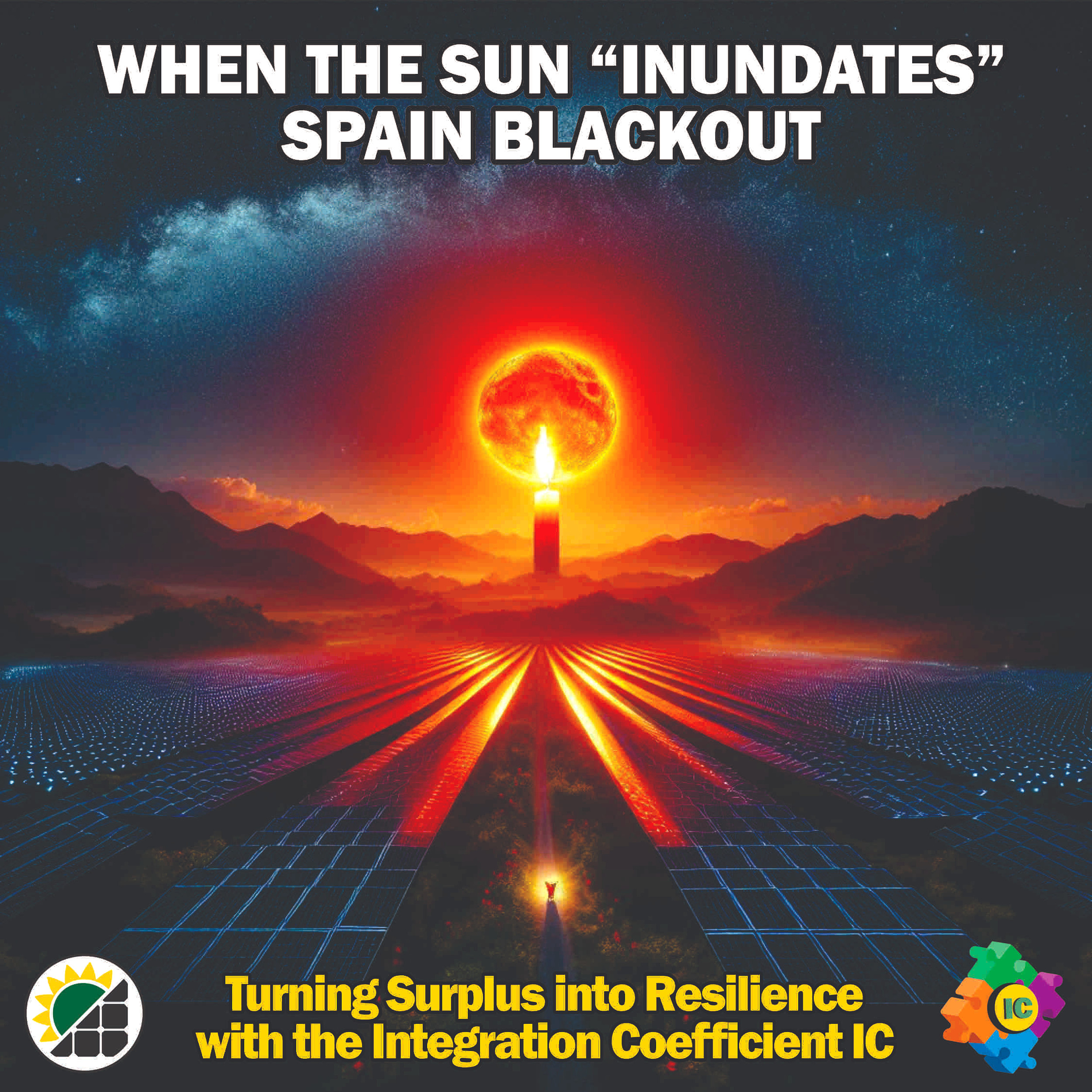
TURNING SURPLUS INTO RESILIENCE WITH THE INTEGRATION COEFFICIENT IC

For a comparison that we consider very illustrative, California has boosted its on-grid solar generation from 2.6 TWh in 2013 to 48.95 TWh in 2022, a growth of 1,783%, while Spain went from 4.8 TWh to 33.89 TWh (+605%) over the same period.
This exponential leap in both territories reflects the great momentum of photovoltaic energy. Still, the key difference between the two regions has been grid preparation and backup, not the “excess of sun”.
The April 2025 Spain blackout just when the sun “inundates,” was caused by a sudden disconnection of 15 GW without sufficient storage capacity or dynamic response systems, not an overabundance of “clean energy.”
In California, there are 18 GW of batteries and an automated and interconnected grid that modulates the flow of power instantly, absorbing peaks and avoiding massive blackouts.
Even so, simplistic rhetoric and excuses are circulating in Spain. Those who argue that “free sunshine is abundant” are fueling a dangerously simplistic myth driven by the interests of incumbents and a battle of forces in the market (Porter’s model) that seeks to preserve margins over energy democratization.
This discourse, more attached to “convenience,” which exonerates those responsible for the causes of the real problems facing the interconnected system, seeks to ignore realities anchored in overwhelming technological explanations, such as a lack of storage and faster-responsive smart grids, the notable lack of implementation of long-term policies, and the obsolescence of current backup power plants, which together represent the true Achilles’ heel.
The gap between past and future technologies creates a systemic vulnerability that is difficult to avoid if the problem continues to be addressed with this misguided approach, fueled by rumors and technical ignorance, clouding the debate and slowing the transition.
Therefore, basic and almost common-sense recommendations emerge:
Energy balance: Integrate clean energies such as solar, batteries, pumped storage, and hydrogen for a stable mix.
Grids of the future: Automation, microgrids, and rapidly adjusting markets.
Sustainable vision: Avoid legislative swings and guarantee constant incentives.
Coordination between operators: To avoid actions that generate confusion in critical situations.
Long-term policies: Avoid “boom-bust” cycles and ensure stable incentives.
Education and transparency: Disseminate real data, debunk myths, and empower users.
With the Integration Coefficient IC, we aggregate demand, diversify leading plants, and promote turnkey solutions, ensuring resilience and real savings. When there is a “surplus” of sun, the IC turns that excess into opportunity: it optimizes flows, strengthens guarantees, and creates a collaborative system in which every extra kilowatt reinforces our energy security.
Source link

